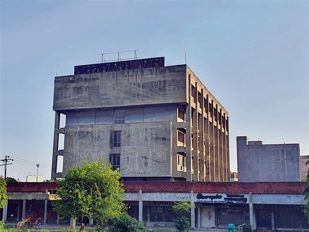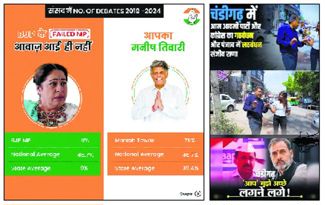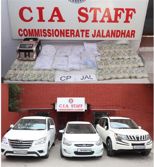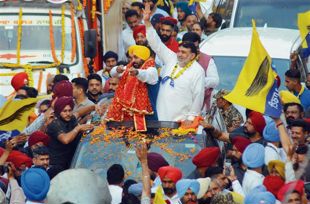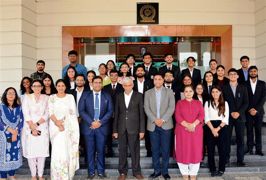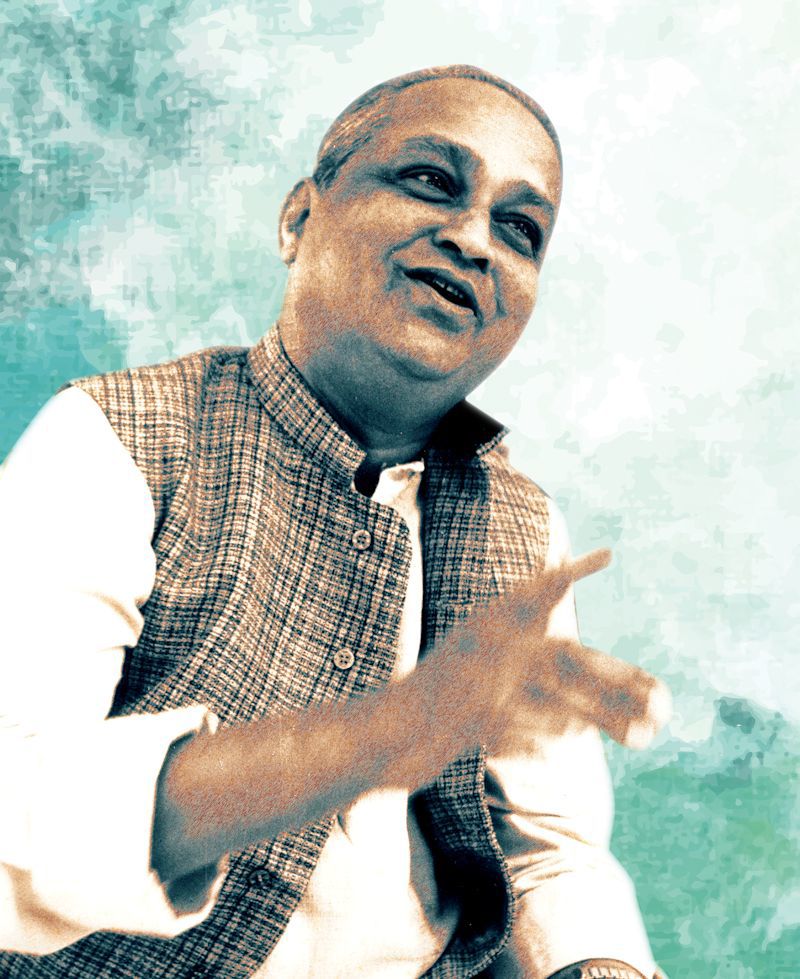
April 8, 1924 — January 12, 1992: Kumar Gandharva would trace shades of ragas in the rustic ditties around. Photos courtesy: Kumar Gandharva Pratishthan
Sreevalsan Thiyyadi
The musician couple left the nascent country’s busiest metropolis for a placid pocket in west-central India. Together, Kumar Gandharva and his disciple-wife Bhanumati Kans hoped to weather a dark phase that had upset their Bombay life, just four months into marriage. Towards the end of August in 1947, a week after Independence, the bad news about classical Hindustani’s most sensational vocalist went largely unnoticed amid the post-Partition turbulence. The prodigious Kumar, only 23, had been detected with tuberculosis. Looking for a balmy place, Dewas in the Malwa plateau came as the choice.
The duo travelled over 600 km northeast to arrive in the semi-hilly small town — on January 30, 1948. The day coincided with the assassination of Mahatma Gandhi. The nation plunged into gloom. In its central belt, Kumar intensified his vow of silence. The maun vrat was anyway indispensable; doctors had prescribed him total avoidance of talking. Complete rest to the lungs in an unpolluted location was all that the medical world could advise those days. From a bustling dhrut-laya that symbolised his speedy rise, life suddenly sunk to a painfully slow vilambit.
Like a meteor across the sky, he cut Hindustani classical into two neat halves: one before Kumar Gandharva, one after him. A BC and an AD in Indian music. — Raghava R Menon, Late scholar and the musician’s biographer
Kumarji’s music blended so well with the tanpuras that his voice sounded indistinguishable from the drones behind him. Yet, he left a lot for you to do, to think. — Leela Samson, classical dancer
Kumar, all the same, assuaged himself and even bolstered this critical juncture with massive doses of contemplation. Beyond the gravitas of straitjacketed melodies that used to colour his khayals, the young artiste began to take in the beauty of the quietude around. The scent of the monsoon earth, the stillness of the wintry air, the chirps of spring birds and the whoosh of the duststorms in summers gifted him with new ideas about sights, sounds and smells. More than anything, the folk tunes along the upland north of the Vindhya ranges began to fascinate him no end. The grassroots experience prompted Kumar to stay in the dry climes of Malwa the rest of his life: for 44 years. The tryst, till his death at 68 in 1992, gifted Hindustani music a novel kind of rendition, which eventually evolved into a school. Yet, one didn’t call it Gandharva gharana because eclecticism was its foundation, on which anyone was free to build further.
So how exactly did Kumar come out of his ill-health? Well, that was thanks to an antibiotic which reached India almost a decade after scientists in America isolated streptomycin from a species of bacteria. The medication from 1952 enabled the musician to recover from the infectious disease. Kumar irreversibly lost one lung; but the voice was largely back. So was the singing capacity. That year he gave a chamber concert: for Prime Minister Jawaharlal Nehru at Mandu, 125 km southwest of Dewas.
Within months, at the end of 1953, Kumar staged a comeback concert on a public platform in Allahabad. As Raga Lankeshwari flowed out in an unfamiliar fashion, the holy city of Hindu-Muslim syncretism scripted a full circle for the genius from the peninsula. It was in the same place that Kumar, on a maiden trip from his native village near Belgaum in Karnataka, had stunned his audience in 1935. At the hub of Ganga-Jamuni tehzeeb, the 11-year-old’s concert stunned the audience that featured Hindustani stalwarts. As vocalist Shantaram Kashalkar famously recalled, in the front sat Faiyaz Khan, Hafiz Ali, Narayanrao Vyas and Vinayakrao Patwardhan, besides playback celebrity singer Kundan Lal Saigal. “The boy began with Ugich ka kanta ganjita, familiar to me through a record by Abdul Karim Khan,” he pointed out in the 2006 documentary ‘Hans Akela’ by theatre-person Jabbar Patel.
Karim Khan (1872-1937), who founded the famed Kirana gharana known after his place near Shamli not far from Delhi, had been a regular guest at the Mysore court. Some 600 km north of the sandalwood city, a child was born into a Kannada-speaking Lingayat household in 1924. The music-loving parents called him Shivaputra, to which got added the names of the father and family: Siddaramayya Komkalimath. Their Sulebhavi village was under the Raj-era Bombay Presidency. Marathi plays were a rage in the area; that’s also why Kumar’s opening song at Allahabad as a pre-teenager turned out to be from the Natyageet musical-drama stream.
It is another matter that Kumar, despite his wunderkind reputation, sang only from the age of eight — and that left the listeners in a trance. Till then, he used to only listen to the elders singing verses of legendary stage actor Bal Gandharva. Originally Narayan Rajhans (1888-1967), he was from Sangli along the river Krishna. Kumar’s future guru, BR Deodhar, too, happened to be from the same sugarcane belt. His vocals were as sweet as scholarly.
At Bombay, where Kumar learned music, he also tutored Bhanumati, a city girl who was into badminton as well. The two fell in love. Their 14 years of marital life, marred initially by the husband’s ailment, ended when Bhanumati died in 1961 while delivering their second child. For Kumar, the life partner had been a motherly nurse in his toughest phase. Equally caring was his second wife, who chose to just accompany Kumar at concerts for three decades till his death in 1992. Only from then did Jamshedpur-born and Kolkata-raised Vasundhara Shrikhande (1931-2015) give solos, which made evident her Kumar style. So is it with their daughter Kalapini Komkali and her niece Bhuvanesh, even as Kumar’s largely reclusive son Mukul Shivputra has always sought to tread his own line.
Kumar has an unmistakable influence on his key disciples Satyasheel Deshpande, Vijay Sardeshmukh and Madhup Mudgal, among others, while even some of those who never learned under him own a Gandharva touch.
What exactly have been the defining features of the Kumar gayaki, renowned for its open forays to the upper registers? Many. One, a profusion of the slippery taan — “not ‘straight’, but ‘double’, where each sur will sparkle twice in succession,” as observed by the late musicologist CP Rele. Second is the stringing together of short passages. In an idiom where long-drawn notes are integral, Kumar’s part-punctured lungs popped up this antithesis. That won him admirers several times more than critics.
When Malwa folk tunes pitched ragas
Three quarters of a century after Kumar Gandharva discovered its identity and infused those elements into Hindustani classical, Malwai folk music continues to uphold its innate values that enjoy a unique charm among the listeners. It was while convalescing from TB, living in his house on a leafy compound of Dewas for five years from 1948, that the maestro got exposed to the tunes of local people. The throbbing lilts of the simple songs caught his immediate fancy.
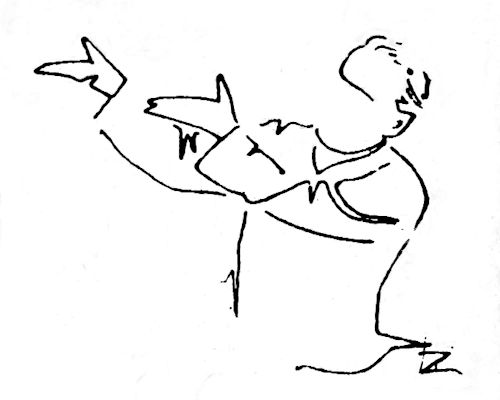
The late vocalist Vasundhara Komkali, Kumar’s second wife, who also learned under him, used to reveal how the master would trace shades of ragas in the rustic ditties around. Deeper studies led Kumar to not only notate the formations, but put them on record and render them at concerts. “In any case, ancient treatises have suggested the evolution of ragas from folk tunes. But none quite sought to devise them. Kumarji pioneered it,” she would recall, listing out his unique blend of ragas such as Shree Kalyan and Kedar Nand. “These weren’t just a mix of notes with some parts sounding like one raga and the rest another. There was a grand blend that gave such melodies an identity of their own.”
Septuagenarian Satyasheel Deshpande, who trained under Kumar, puts it thus: “Panditji, to my mind, would sense three or four notes, which is all they have, in a folk song. These will be the seeds to a prospective raga. At this, he fixed a basic syllable (aadhar swar), based on which he mapped the possible movements along the entire octave.”
Chimes in cultural critic Ashok Vajpeyi, also from the region (Durg in present-day Chhattisgarh): “Kumar was not in the best of health when he was first exposed to Malwai music. Bearing various moods, some songs are melancholic too. The maestro lapped them up impulsively.” Further, Kumar went on to sometimes use the prohibited note (varjit swar), while also interrogating the prevalent perceptions around devotion, he points out.
The massive prevalence of mystic Kabir’s poems across Malwa did catalyse the post-ailment creativity in Kumar, who had by then realised the value of being dispassionate towards life at large. That set in a different kind of devotional value to Hindustani bhajans, according to scholars. “Far from praying to gods and rendering laudatory lines aimed at pleasing them, Kabir’s literature that highlighted the awesome futility of life lent freshness to classical music, courtesy Kumar,” notes writer-activist Vinay Hardikar in the 2008 documentary ‘Koi Sunta Hai’, directed by Shabnam Virmani of Srishti School of Arts, Bengaluru. Adds scholar Ram Kolhatkar: “The way in which Kumarji presented Kabir’s Nirguni to people actually added to the stature of the poet.”
Thumri singer Vidya Rao, summing up the philosophy, says the human body can be tuned perfectly like a tanpura — and yet the physique is not everything. The Adivasi Lok Kala Parishad in Bhopal, pointing out that the saint’s popularity went on to spur ‘Kabir lyrics’, has 1,750 such poems in local dialects. “Some are penned by others but carry the original spirit,” says philanthropist Kapil Tiwari.
Join Whatsapp Channel of The Tribune for latest updates.





















